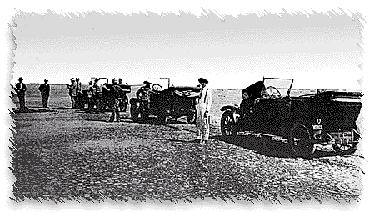San
Felipe, Baja, Mexico has a multifaceted past.
Due to the richness of its resources, the early abundance
of the sea and the unparalleled beauty of the surrounding
scenery, a good many politicians and businessmen have
bent an ambitious eye toward its offerings. Over the years
of its evolution great plans have been made to shape San
Felipe into a land developer's dream, a sports fisherman's
mecca, an off-road racer's ultimate challenge, a gambler's
dream and a tourist's first choice for a vacation resort.
None of these goals have met with complete success and
there is no obvious reason why they have not.
The first wholesale encounter
between San Felipe and the industrialized world was with
a group of German seamen. The Chinese living in the Guaymas
area had fished out the totuava, a large bass-like
fish prized for its bladder by the people of China. The
Germans, seeking a more available supply, discovered a
rich source off the San Felipe coast. They removed the
bladders and disgarded the rest of the fish, up to 200
lbs. of wasted meat. Rumors of the operation spread and
a few enterprising Americans made the difficult journey
to San Felipe where they purchased the fish remains for
the remarkable price of twenty pounds for an American
penny. They started a business by driving ice-trucks to
San Felipe, loading them with totuava and taking
them back to the US where they were sold as "sea-bass".
About this time, Coronel
Esteban Cantú Jiménez, who was governor
of the District of Northern Baja from 1915 to 1920, made
a number of expeditions south from Mexicali in an effort
to locate sources of gold and silver.
|
It was Coronel
Cantú's engineers who designed the first road to
San Felipe. Cantú immediately
recognized San Felipe's potential and made several attempts
to develop the area. But limited finances always seemed
to keep his goals short of realization.
 |
| A Col. Ernesto
Cantú expedition to San Felipe cerca 1918 |
Once a graded road existed,
it was inevitable San Felipe's rich secrets would eventually
be discovered by the rest of the world. In 1947, former
Mexican president Abelardo L. Rodríguez contacted
the American sports fisherman Ray Cannon and asked him
to test-fish the waters of the northern gulf. Rodríguez
by that time had extensive real estate holdings in San
Felipe and, like Cantú before him, was interested
in developing the area. Within three years of Ray Cannon's
report, a paved road existed between Mexicali and San
Felipe. Of course, a steady stream of anglers and tourists
immediately followed and San Felipe took its first step
toward becoming a tourist town.
Afro-Mexicans have played
an important role in the history of California. Read
this for more information. |